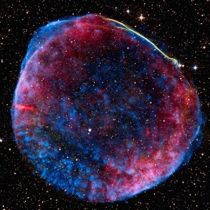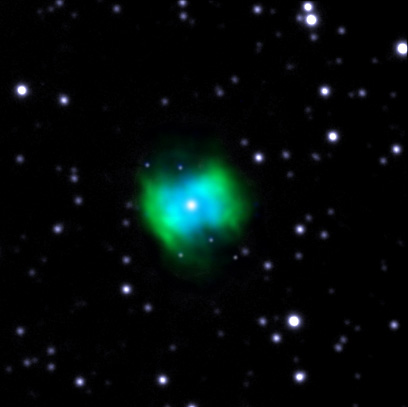
Stellar and Interstellar Physics
Stars are fundamental physical probes. The Severo Ochoa project is supporting the major center goals in the Stellar and Interstellar Physics research line: to understand the physics and life cycle of stars, from the most massive and luminous stars to the least luminous brown dwarfs which bridge the gap to the planetary domain, together with the interplay with the interstellar and circumstellar material in different environments and stages of stellar evolution.

Specific Goals:
- Discover and study black holes, neutron stars and white dwarfs in systems under strong gravity fields.
- Clarify the role of stellar winds in the most massive stars and the formation/evolution of brown dwarfs bridging the stellar and the exoplanet domain.
- Understand the final stages of Sun-like stars and unveil the distribution of carbon and the role of carbon-bearing molecules in interstellar prebiotic chemistry.
Main Scientific Outputs:
Compact binaries:
- BlackCAT (Corral-Santana et al. 2016, A&A), a reference catalogue of stellar-mass black holes (BHs) in X-ray transients.
- Dynamical confirmation of two new BH binaries (Torres et al. 2019, ApJL; Liu et al. 2019, Nature) and new method to unveil the dormant population of Galactic BHs (Casares 2018, MNRAS; Casares & Torres 2018, MNRAS).
- Discovered a new type of wind in BH X-ray transients during outburst (Muñoz-Darias et al. 2016, Nature) and a potential massive binary millisecond pulsar (Linares et al. 2018, ApJ).
- Detection of an extremely fast orbital period decay in a BH binary (González-Hernández et al. 2017, MNRAS). There is no standard evolutionary model able to explain the fast decay rate of this system, thus having strong implications on the evolution and lifetime of these black hole X-ray binaries.
- Constrained the jet launching region in BHs (Gandhi et al. 2017, Nat Ast).
- Discovery of a large recurrent nova remnant in M31 with a shell size showing thar for millions of years the nova has undergone eruptions with high frequency (Darnley et al. 2019, Nature).
- Discovery of two of the most massive contact binaries known, providing the first detailed characterization of these systems, probable progenitors of gravitational wave sources (GU Mon - Lorenzo et al. 2016 and VFTS 352 – Almeida et al., 2015).
Very low mass stars and brown dwarfs:
- 5D maps of four nearby open clusters exploiting the exquisite astrometric accuracy of Gaia (Lodieu et al. 2019a,b, A&A).
- A benchmark sequence of brown dwarfs and isolated planetary-mass objects in the nearest OB association to the Sun, Upper Scorpius (Lodieu et al. 2018, MNRAS).
- The most comprehensive spectroscopic dataset to date to infer metallicity, gravity, and temperature scales of metal-poor subdwarfs (Lodieu et al. 2019c, A&A).
- Confirmation of 100 late-M (M5-L1) subdwarfs by cross-matching large-scale imaging surveys: 2MASS, SDSS, and UKIDSS. The study has provided spectral types and 3D space motions for all the sources under investigation (Lodieu et al. 2016).
- Discovery of the most metal-poor substellar object until now (Zhang et al. 2017b).
- Discovery of a new L5 member of the Hyades cluster with chromospheric activity detected with GTC/OSIRIS spectroscopy (Perez-Garrido et al. 2017).
Asteroseismology:
- Probed the edge of our Galaxy with better precision than Gaia (Mathur et al. 2016, ApJ).
- Granulation power can provide surface gravities of main-sequence to red-giant stars with a ~5% precision (Bugnet et al. 2018, A&A).
- A team of experts in asteroseismology at the IAC, together with the rest of the SONG collaboration, has published a detailed study of the spectrum of oscillations of the star μ Her based on some 30,000 spectra collected in 2014 and 2015. The investigation detected a total of 49 oscillation modes.
Ionized nebulae:

- Reassessment of the shape of the radial gradients of O and N abundance of the Milky Way (Esteban et al. 2017, MNRAS; Esteban & García-Rojas 2018, MNRAS).
- First direct image of the O2+ recombination emission in a planetary nebula (PN) (García-Rojas et al. 2016, ApJ).
- Discovery of new binary central stars in PNe (Jones & Boffin 2017, Jones et al. 2019) and their influence on the nebular ejection morphology and kinematics of the common envelope (Hillwig et al. 2016, ApJ).
- First imaging spectroscopic survey of the planetary nebula NGC 7009 with MUSE (Walsh et al. 2018, A&A, selected as highlight of the journal).
- IAC researchers have found that the discrepancy between the abundances of a given element determined from collisionally excited and recombination lines in HII regions seems to have a dependence with metallicity. A strong connection between the abundance discrepancy problem and the binarity of the central star in planetary nebulae has also been identified.
Massive stars:
- Completed the spectroscopic and physical characterization of the largest sample of Galactic massive O-type stars to date (G. Holgado, Ph.D., ULL, 2019).
- Described, for the first time, the distribution of the macroturbulent broadening in the whole OB domain (Simón-Díaz et al. 2018; Simón-Díaz et al., 2017; Godart et al., 2017).
- Discovery of the two earliest O-type stars with the lowest metallicity known to date (García et al. 2019, MNRAS).
- Determined the physical properties for a sample of nearly 200 massive stars in a single star formation region, 30 Dor, in the Large Magellanic Cloud, which is witnessing the most intense star formation ever observed among those where individual stars can be resolved (Sabin-Sanjulian et al., 2017; Ramirez-Agudelo et al., 2017). The investigations to date show that it is necessary to improve the stellar evolution models for massive stars, as well as the models for radiation-driven winds.
- First atlas of OB-type stars at metallicities lower than that of the Small Magellanic Cloud (Camacho et al., 2016). The observations were performed with GTC-OSIRIS and represent the first study of a massive resolved stellar population in galaxies at low metallicity.
Chemical abundances in stars:
- Computation of the largest available libraries of synthetic stellar spectra (Allende Prieto et al. 2018, A&A).
- Identification of several of the most metal-poor stars known (Aguado et al. 2018a,b; 2019, ApJL).
- Cutting-edge software for automatic determination of stellar abundances (García Pérez et al. 2016, AJ; Masseron 2019, A&A).
- Machine-learning applications for classifying families of stars (Garcia-Dias et al. 2018, 2019, A&A).
- Measurements of [C/Fe] and [N/Fe] have been carried out for 95 individual Red Giant Branch stars in the Sculptor dwarf spheroidal galaxy. This is the first time that [N/Fe] was measured for such a large number of stars in a galaxy of that type (Lardo, Battaglia et al. 2016).
- An IAC team working in the APOGEE project has uncovered multiple transitions of the rare-earth element neodymium in the H band. This discovery makes it possible to determine the abundance of this element in tens of thousands of stars observed with the APOGEE instrument (Hasselquist et al. 2016).
- The first public data release from Gaia (Gaia Collaboration 2016) provided new insight into the dynamical effects that has led to the correlation between Galactic rotation and chemical composition known to be present in the stellar populations in the Galactic disk (Allende Prieto, et al. 2016).
Late stages of stellar evolution:
- First mid-IR GTC/Canaricam images of C60 fullerenes around a planetary nebula (Díaz-Luis et al. 2018, AJ) and detection of fullerenes C60 and C70 in the star-forming region IC 348 of the Perseus molecular cloud (Iglesias-Groth,2019, MNRAS).
- Detection of wide binary systems around extreme massive AGB stars solved the decades-old conundrum about the extreme superwind in these stars (Decin et al. 2019, NatAst).



